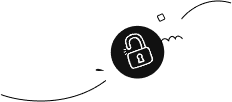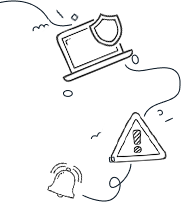Introduction: A Hacker, a Nation, and a VPN Walk Into a Bar
When you hear the word “cyberattacks,” you might picture a mysterious figure in a hoodie, hunched over their computer in a dark basement. While that’s still a vivid mental image, today’s digital whodunits often involve nation-states playing the villain role. Yes, you heard right—trust-fund hackers with a government-issued badge are making cyber chaos their new hobby.
So, what are these nation-state cyberattacks? Imagine if the usual cybercriminals had a personal army, a shopping budget that’s bigger than your city’s annual budget, and fancy diplomas from “University of Cyber Warfare.” These government-backed troublemakers aim to disrupt businesses, steal sensitive data, and hold your digital life hostage. Yes, even your cat videos!
Why Are These Attacks on the Rise? Spoiler Alert: Geopolitical Drama
What’s more entertaining than a binge-worthy TV series? Geopolitical tensions! And they feed the hungry beast known as cyber warfare. Countries are throwing digital punches at each other, hacking away at government agencies, power grids, and private businesses—all while hoping to win a diplomatic pie-eating contest. Recent “episodes” include:
- Massive ransomware attacks that made some energy and healthcare sectors feel like they were on a rollercoaster ride—minus the fun.
- Supply chain infiltration, where attackers sneak in like ninjas and compromise software updates to reach thousands of unsuspecting companies at once. Surprise!
- Espionage campaigns stealing intellectual property that’s juicier than any summer blockbuster.
These aren’t your average weekend hackings; nation-state cyberattacks are like well-rehearsed plays—strategic, calculated, and involving resources that make your office supply budget look like pocket change.
Case Study: Colonial Pipeline – A Fuel Fracas
On May 7, 2021, the Colonial Pipeline experienced a ransomware incident that left more people in line at gas stations than at a Black Friday sale. The cybercriminal group DarkSide used a compromised password from an inactive VPN account, which brings “no multi-factor authentication” to an entirely new level of trouble. As a result, the pipeline shut down, leading to widespread fuel shortages and chaos. Panic buying? More like “panic re-fueling!”
The Federal Motor Carrier Safety Administration decided to issue a regional emergency declaration for 17 states and Washington, D.C., showing just how serious this “gas-gate” was. We’re talking about around 45% of the East Coast’s fuel supply taken hostage. This is why security isn’t such a boring topic—it’s a matter of filling up your tank!
Case Study: SolarWinds – A Supply Chain Soap Opera
Next up in our dramatic series is the infamous SolarWinds supply chain attack. This story had more gloss and intrigue than any primetime series could dream of!
In December 2020, hackers took a leisurely stroll into SolarWinds, stole a few breadcrumbs of malicious code, and slipped it into their Orion software updates. Thousands of unsuspecting customers ended up downloading this digital “gift,” allowing attackers uninvited access to their networks. Think of it like someone placing a party crasher right at the punch bowl.
Though SolarWinds issued security patches faster than a magician pulls rabbits out of hats, the aftermath had organizations scrambling to fortify their digital fortresses. The SolarWinds hack stands out as one of the major supply chain attacks of our time—without the need for popcorn!
What Can You Do to Stay Safe? Put Your Cap on, Detective!
Even if you traded your security responsibilities for a comfy chair, your actions count! Here are some tips to turn you into a cybersecurity superhero:
- Be cautious with emails and links. If you see a link that seems fishy, ask yourself: “Would my grandma click this?” If the answer is yes, double-check the source!
- Report unusual activity immediately. If something feels off, don’t ignore it—yell “IT’s a trap!” and let your IT team know. Early detection is like spotting a leaky boat before it sinks!
- Lock down your accounts. Use strong passwords that even you can’t remember, and please, for the love of bytes, enable multi-factor authentication (MFA). It’s your digital bodyguard!
- Beware of social engineering tactics. If someone asks for sensitive information, channel your best detective attitude: “Verify before you comply!” Remember, attackers often disguise themselves as trusted pals to snag your data.
Cyber warfare isn’t just a government issue—it’s your next-door neighbor’s problem, too! Everyone in the workplace has a duty to stay informed and vigilant. That way, you can keep the villains at bay!
Conclusion: Joining the Cybersecurity League
Understanding the tactics and strategies of nation-state actors is your new superpower! By implementing robust security measures, you can help shield your organization from these sophisticated threats.
Nation-state cyberattacks are growing faster than your to-do list after a long weekend, with a level of sophistication that would get them a standing ovation if they were performing at the local theater. As geopolitical tensions ebb and flow, digital warfare is making its presence known. Remember: cybersecurity is a team sport, and you’re part of the league!
So, stay informed, keep your antennas up, and always be ready to spring into action at potential threats. By being vigilant and adopting cybersecurity best practices, you can protect your workplace and keep your personal data safer than a squirrel in a tree during a thunderstorm!
The post The Rising Threat of Nation-State Cyberattacks appeared first on .




